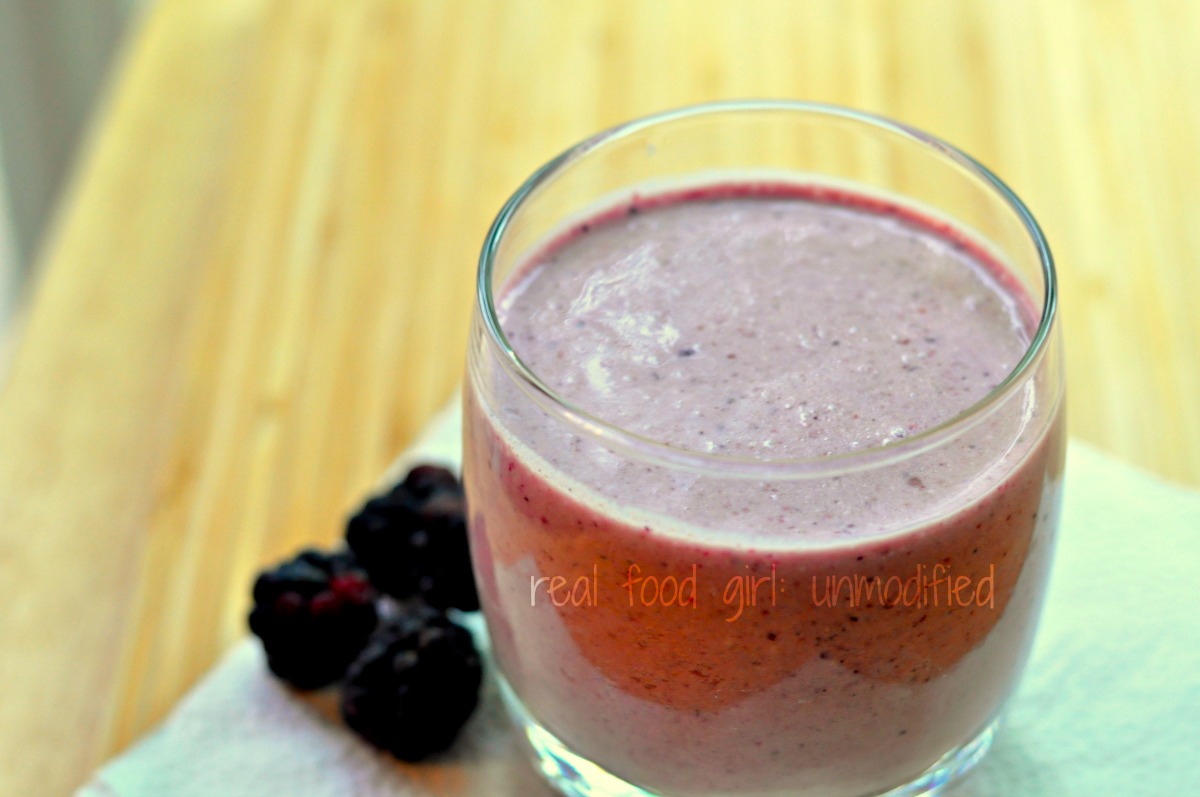
Conquering Milk Kefir
I did it! I really did it! I seriously have no idea what I was so afraid of. Making milk Kefir was probably one of the easiest things I’ve ever done in the kitchen. If you can pour milk, you can make Kefir! In fact, you could do this with your eyes closed and one hand tied behind your back. Yeah, you’d make a mess but who doesn’t enjoy a good mess in the kitchen?
A fellow food blogger was nice enough to mail me some Kefir grains. When they arrived in the mail I freaked out, and tossed them in the fridge. Admittedly I have no idea when I was planning on getting around to dealing with them, and I may have been secretly hoping that they’d just magically make a gallon of Kefir on their own without any help from me, but that didn’t happen.
I love probiotic drinks. Being that I’m healing from Irritable Bowel Syndrome, probiotic and fermented drinks have become my new best friends. Between Kombucha, Kefir and my Real Food Electrolyte Drink, I don’t have time for sodas, or any other unhealthy drinks. I love how I feel after drinking Kefir. I just feel strong, focused, and alert and I’ve got pep in my step. Kombucha does the same thing for me. I can tell when I’ve skipped a few days because I start to feel foggy-brained and sluggish. And not that this is a big selling point or anything, but I swear this stuff keeps you regular!
Maybe I should email Jamie Lee Curtis and tell her to save a few dollars and consider ditching that nasty Activia Yogurt in favor of something healthier. How could she not want to come over to the Real Food side after learning about the ingredients in Activia. Let’s take a quick peek. Activia contains modified food starch (GMO) , corn starch (GMO) , guar gum, carageenan, natural flavor (MSG anyone?) agar agar, sugar (GMO), water, gelatin, milk protein, whey protein, carmine for coloring (which is a natural coloring made from the extracts of dried bodies of the Coccus cacti bug), sodium citrate (keeps the mixture emulsified) and citric acid. (Source)
Does any of that gross you out? For crying out loud it’s just yogurt! Yet Dannon has managed to produce a “yogurt” using crap and foodstuffs for ingredients and they put a lot of money into clever marketing to get you to eat 3 yogurts a day to become regular. Here’s a news flash. Eat more fiber. You’ll become best friends with your bathroom every day. I promise. Best of all, no extracts of dead dried beetle bodies. Say that ten times fast.
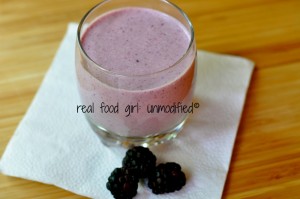 Did you know that Milk Kefir is a cultured, probiotic drink? It’s tangy, and sour and similar to liquid yogurt. It can also be a little effervescent. To some it is an acquired taste, but I loved it after the first sip. There is a huge difference in taste and texture between the store bought and homemade. FYI.
Did you know that Milk Kefir is a cultured, probiotic drink? It’s tangy, and sour and similar to liquid yogurt. It can also be a little effervescent. To some it is an acquired taste, but I loved it after the first sip. There is a huge difference in taste and texture between the store bought and homemade. FYI.
To add some fun and flavor to your Kefir, you can blend in fruits if you don’t want to drink it plain. You can even add vanilla to it. You can cook with Kefir, make Kefir cheese, or Kefir cream, the possibilities are endless. Since it’s taken me 5 months to make my own after learning what it was, chances are you won’t be seeing a recipe for Kefir cheese on my site any time soon. I’m sorry. Feel free to file a complaint with upper management.
Did you know that Kefir is loaded with a quite the complex collective of up to 27 different varieties of bacteria and 27 different types of yeasts? When I heard that the first thing I thought was “Whoa! This is like a super-food!” Short of running your grains to a lab to have them tested, you won’t know which strains of the bacterias or yeasts that your grains contain, but regardless you have one mighty healthy beverage on your hands. (Source)
Milk Kefir is bursting with all sorts of vitamins, minerals, and amino acids. (Source) You could spend a good hour online reading up on all the benefits of Kefir. In fact, I’d recommend spending a little time doing just that so you not only understand just how good this stuff is for you, but also so that you might just be motivated to procure some Kefir grains and take a stab at making your own. Cultures for Health sells Kefir Grain kits for under $20.00. Or you may know a friend who can share a tablespoon of their grains so you can get started.
Here are a few links to get you started:
Cultures For Health, and Cultures For Health
What Kind of Milk Should I Use?
Organic or Raw milk is best. However if the best you have is regular ol’ whole milk from the grocery store that will have to do. I went and splurged on some grass-fed cream-top organic whole milk today. I made my first pint with regular Organic Milk from Trader Joe’s, but I wanted something special for my second batch. I have read that people have had success using goat’s milk and coconut milk. I do not know if any other type of milk would work. I do know that if you ask me about Skim milk, I’m going to direct you to this post and then ask you to also read this post and then beg you to never speak of Skim milk again.
So What Do I Need to Make Kefir?
I’m glad you asked! I’m going to list everything you’ll need to use from start to finish.
- Two pint sized jars or one quart sized jar
- 4-cup glass measuring cup or quart sized glass bowl
- Cheesecloth or paper coffee filters and a large rubber band
- A mesh strainer- preferably nylon
- Silicone/rubber spatula
- Wooden spoon
- Organic or raw milk
- 1 TB Kefir Grains
- Fresh or frozen fruit or berries of your choice
- 12-48 hours TOPS
What Do I Do Next?
- I sterilized my jars in boiling water for 2 minutes because you do not refrigerate Kefir as it is fermenting. As a result you don’t want the wrong kind of bacteria growing in your Kefir. So sanitize the jars and lids. I’ve read to never put metal near the Kefir as it can mess with the taste. Because I have a tendency to knock things over in my kitchen, I opted to not make a lid of cheesecloth and paper coffee filters and a large rubber band. I used a regular metal lid and was careful not to stir, shake or move my Kefir while it was busy getting busy.
- Put your TB of Kefir Grains in the bottom of your jar(s) (split the grains if you have two jars). I only had about a teaspoon of grains when I made my first batch so I only made one pint. I now have a TB. My grains multiplied big time!!
- Add your milk to within 1/2 inch of the top. If you want a thicker product, you may add some cream.
- Seal your jar(s), make note of the date and time and put it in a warm, dry place for 12-48 hours but no longer or your grains will starve. You may stir your Kefir as it’s fermenting but you do not need to. It may separate and look chunky and watery, or it may not. I’m still a novice at this. Mine started to get thick and then started to separate at the top and a yellowish watery liquid streaked through the Kefir. I knew it was ready. It took mine just about 40 hours to ferment and it wasn’t as thick as I’d wanted it to be, but I figured that was because of the milk I used. You can let it ferment a second time by putting it on the counter for another 12 hours after you strain it. If you do, it should really thicken up.
- When your Kefir is ready, break out your strainer, and your glass bowl or glass measuring cup, your wooden spoon and spatula.
- Gently pour the contents of your jar into the strainer that should be placed over your bowl or measuring cup. Using the wooden spoon or your spatula, gently press the Kefir through the strainer being careful not to smoosh your glob of grains. Mine grew from a teaspoon to a Tablespoon of grains. I was super excited. It means I can brew a quart at a time vs. a pint at a time.
- Once all the Kefir is strained into the bowl, set the grains into a freshly sterilized jar and fill with organic milk and start your next batch. If you don’t want to make another batch that soon, still pour in the milk, and just put the sealed jar into the fridge. Cold hinders the grains ability to ferment, so that can buy you a few days until you’re ready to make more.
- If you want to make your Kefir fruity, add 1/2 to 1 cup of fresh or frozen fruit to the carafe of a blender. Add a few scoops of the Kefir to the blender and whir it until it’s nice and smooth. Add the fruit mixture to your Kefir and stir to combine. You are now ready to drink your Kefir, OR you can store it in a glass container with an airtight lid in the fridge to let it get cold. It should keep for at least 5 days in the fridge.
That’s it! How easy is that? Time and room temperature surroundings and those little grains do all the work. I love it every once in a while when something easy comes along, and Kefir is definitely easy!! What is your favorite flavor to combine with your milk Kefir? Let me know in the comments below.
PAID ENDORSEMENT DISCLOSURE: In order for me to support my blogging activities, I may receive monetary compensation or other types of remuneration for my endorsement, recommendation, testimonial and/or link to any products or services from this blog.
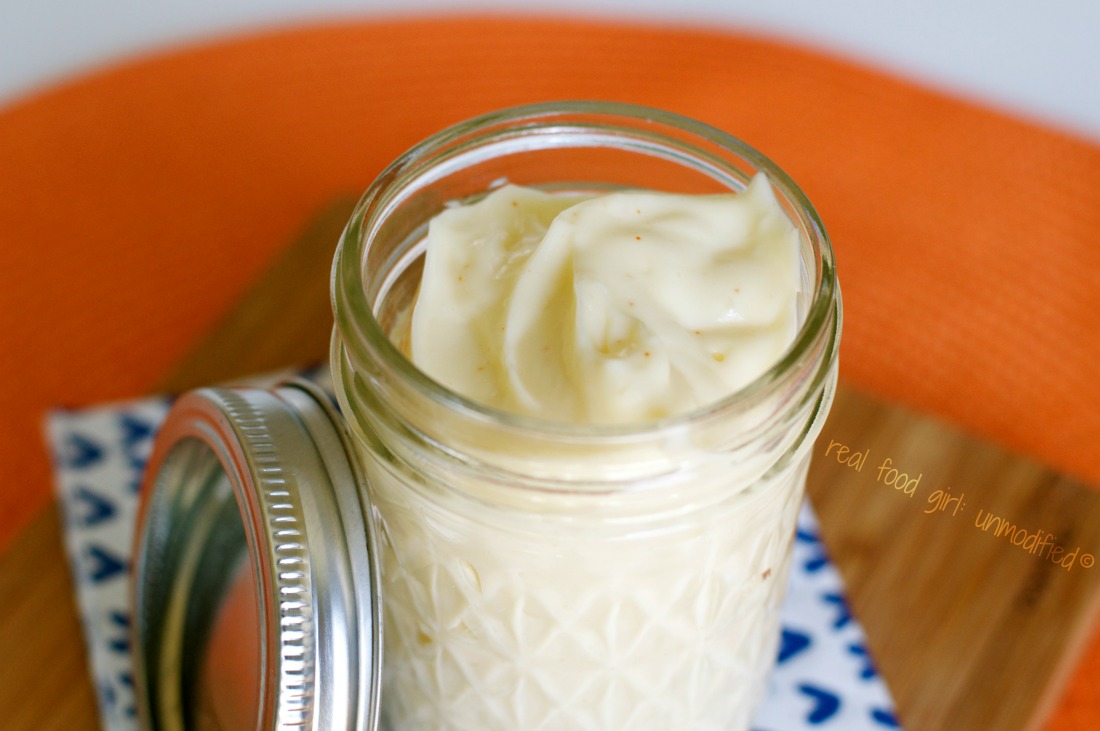
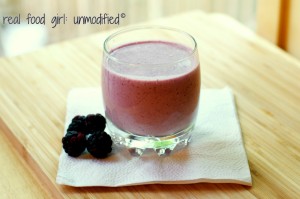
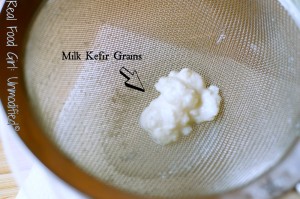
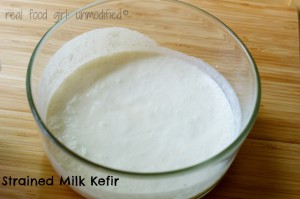
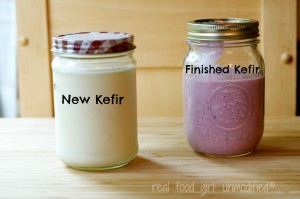
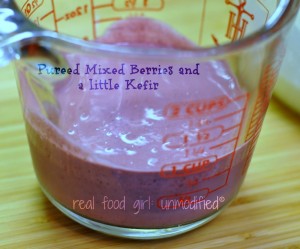
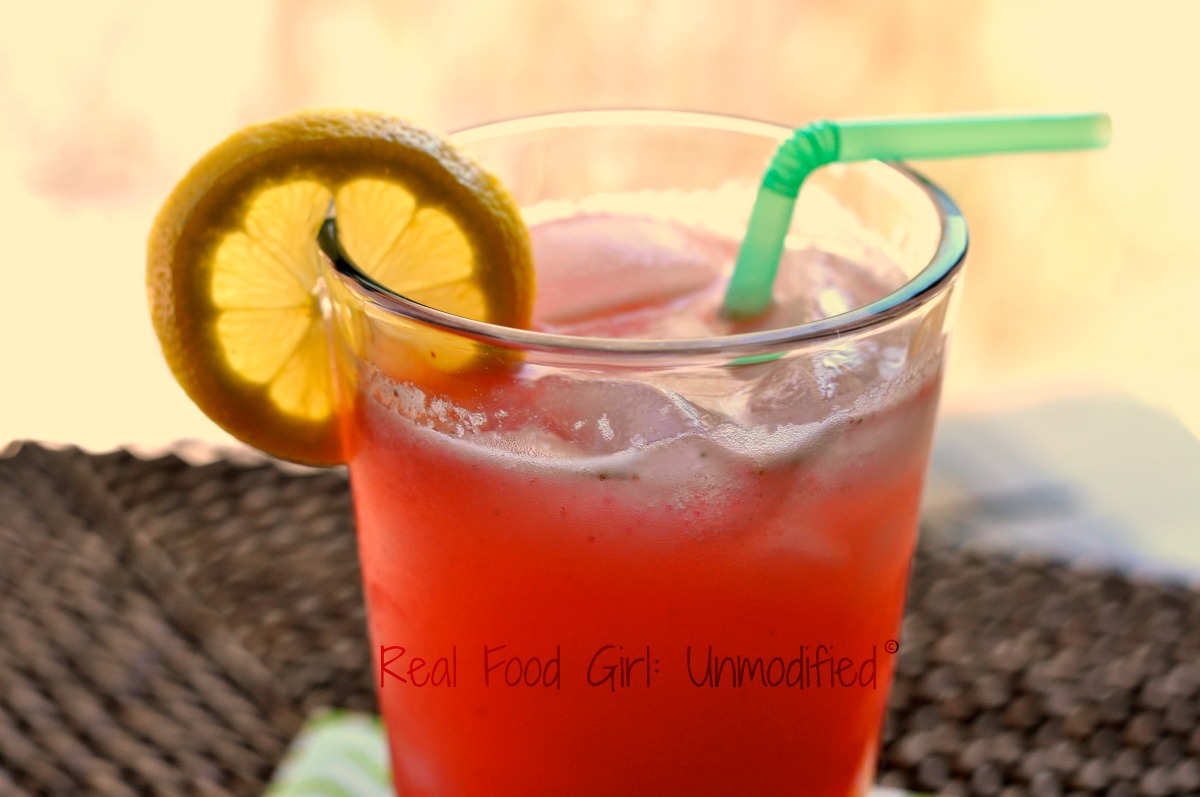
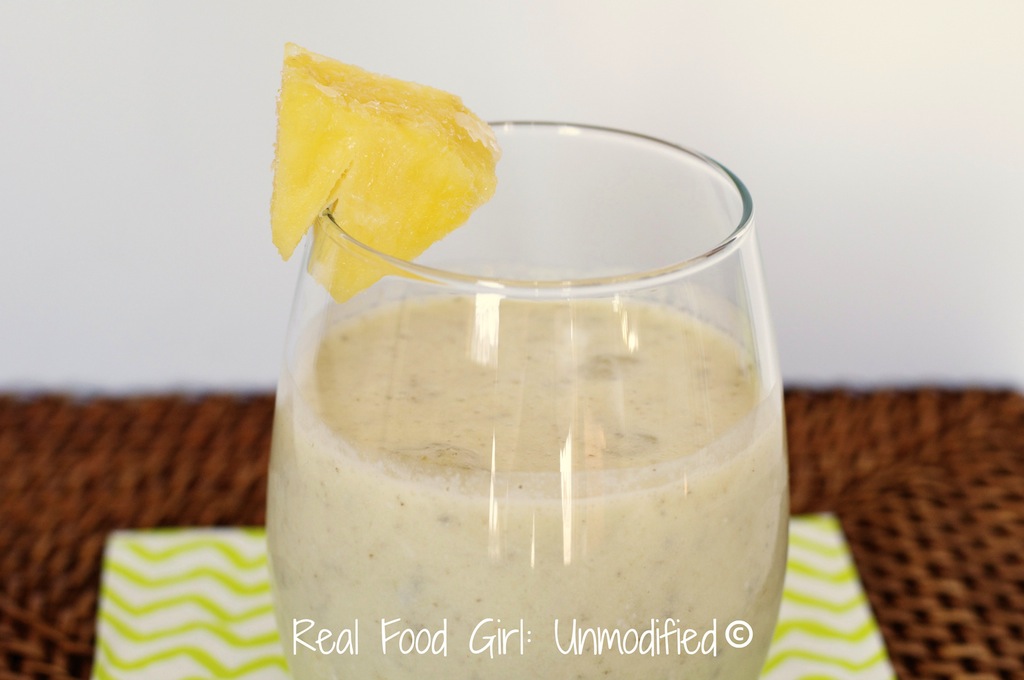

34 Comments
wallace baisden
your comments on Activia Yogurt is right on. I’m enjoying fresh kefir every morn. enjoyed your post.
Sylvia
Hi, is it alright to drink milk kefir without second fermentation?
Kristine Cocchiarella
I believe only water kefir has a second fermentation, and that is only if you intend to flavor it with fruits/spices. I don’t ferment my milk kefir twice. I never have. It’s not how I was taught.
Tim
You definately can 2nd ferment milk kefir. Im doing it right now (although its my first time) I was told by the Kefir expert Dom here in Australia 🙂
Kristine Cocchiarella
Good to know! I personally don’t know if I could handle a second ferment, but enjoy! 🙂
Mary
The second ferment mellows the flavor and increases the Vitamin content (so I’ve read). I always second ferment, if only for 4 – 8 hours (I live in SoCal and it’s warm here). I don’t like fruit, etc. flavoring so I add a little more milk so the microbes can feed on the milk sugar. The kefir gets thick and frothy and tastes wonderful, not sour or strong.
Mattie
Hi I’ve been making kefir for a while now and I love it. I do my second fermentation with the fruit in it and I usually leave it for a good while sometimes until it is completely curds and whey and then I blend it together makes it much thicker and reduces the sugars and makes it nice and fizzy my favourite flavours are banana or strawberry kefir.
Marie
Do you sell/give away your kefir?
Kristine Cocchiarella
I do, however the grains I used to make the kefir in this post died. 🙁 I bought some new ones and they are terrible. The kefir makes me nauseous. I’m off to find new grains. Check back in a couple months. 🙂
Mary
They might not be “terrible” they might be more powerful than your last batch and you are experiencing a Herxheimer response (healing crisis) from die off. Simply start with a small amount until you feel better then slowly increase the dosage.
S.L.Lockhart
Great directions, very detailed but concise. I love MK and continue to drink it daily. I feel so much better and my allergies and my headaches are almost gone.
I think that more folks should go down the path of ferments and stop going down the path of processed.
I am gong to subscribe to your page to keep up on your posts.
Thanks for the great way you have described making Milk Kefir!!!
Kristine Cocchiarella
Thank you 🙂 It’s my favorite way to start the day!! 🙂
Amanda
How long does the Kefir last in the fridge? How long would the thicker Kefir cheese last in the fridge? I also read somewhere that you should not mix room temperature Kefir Grains with cold milk. Is this true?
Thank you!
Kristine Cocchiarella
My kefir doesn’t last more than a couple days before it starts to get a little funky, but I usually go through a quart every two days, so I rarely have a chance to see if it lasts longer than 3 days. I’m not sure about the cheese, I’ve never made kefir cheese. I’ve not read that you shouldn’t do that and I add cold milk to my grains each time I make it. I wonder if I should try bringing the milk to room temp, first. I’ll have to look into that. Thanks for asking that question. 🙂 My guess is any type of kefir will be okay in the fridge for a few days, maybe 3-5 tops. But it could be longer. Maybe start with a small batch and test it? 🙂
Robin Tryon
Hi, I love your site and recipes. when you remove the grains from the fermented kefir and gently press the curd looking stuff thru the strainer…should your grains only have grown a small amount….I had about 2 tablespoons and after my 1st batch I had about 4 times that much….it all looked just like the starter grains so I didn’t want to damage them and didn’t push them thru the strainer…my second batch is fermenting just great and that 1st batch tastes like a mild tangy kefir….not like soured or bad milk….
Kristine Cocchiarella
Typically they won’t grow that much in an 18-30 hour period. You should be able to pick up, either with your hand or a wooden spoon your kefir grains and immediately move them to a new jar. Then you can press your kefir through a mesh strainer- just to make sure you didn’t leave any grains behind. I don’t even strain mine anymore. My grains usually stay at the top, so I open the jar, spoon them out, and then just add fruit and blend with my stick blender. Let me know if you have any other questions. You can email me at Kristine at real food girl dot com. 🙂
Jason
Great information but one thing you brought up being an issue should not be a problem at all. It’s the subject of “metal lids” I see other people freaking out on the metal lids that have been great for all kinds of canning and fermenting foods for many years. Yes, the lid is made of metal but the under side has a plastic or rubber type of material coating to protect the food inside the jar from touching the metal. I use these types of jars and lids and I make sure to not tighten them completely so the kefir can breath. I tighten the lid every 4 hours or so and shake the kefir to move those grains around so they can better access to the milk. If you do some research, you will find that the mountain people who first made kefir would put the milk in a hide type of bag and hang it from a door opening so they could knock it around a little bit when leaving and entering the room. This agitation aided in keeping fresh milk around the kefir grains. This is not something that has to be done but I think it helps make a good all around product!
Kristine Cocchairella
Thanks for the great information, Jason. Much appreciated. And yes, I use those types of lids, too, but with all the fancy canning jars coming out without those coated lids, I would rather err on the side of caution for my readers. 🙂
Jason
I understand, and again this blog and links attached about whole raw milk etc is great information for the masses trying to get healthy!
My grandmother made a lot of fermented foods and only ate from her garden. She also bought beef from farmers she knew locally. That lady smokes like a chimney and has for ever but in her 80s she is in better shape than me lol. I’m not suggesting smoking is good but I do believe fermented foods keeps the DR away.
Here’s to whole raw milk KEFIR !!
Kristine Cocchairella
Amen to the fermented foods! 🙂
Jen
Great article! I love fermenting my kefir at home. Buying kefir from the store is fine, but does not have nearly the amount of benefits and bacteria/yeast strains that home brewed kefir has. Also, I have been able to keep kefir in my fridge well over 5 days. It doesn’t go bad, it just keeps fermenting. The longer you ferment the more strong the flavor and the alcohol content will rise as does the vitamin content. It will also have a more effervescent feel to it, which I love. It’s like having milk soda.
Kristine Cocchairella
I love it too! I’ve let mine ferment for quite some time, but I don’t care for it as much when it tastes like hooch. LOL! 🙂
Mary
Ha ha, more like milk beer!
Jess
I’ve been using Kefir for a few days now and already feel the benefits and have found it easy to do.
Do you also ferment your own Kombucha or do you buy it? I’m awaiting delivery of my home fermentation supplies and wondered if you had any tips.
Kristine Cocchairella
I do not yet ferment my own as I do not have the room to do the continuous brew system that I’d like to have. At the moment I buy it.
Steph
I’m trying to get into some healthier eating practices, and just bought a bottle of vanilla kefir to use in some smoothies. Is there anything wrong with using sweetened, flavored kefir? It is Life way organic.
Real Food Girl
I personally prefer to make my own kefir. I think it tastes better and I know each and every ingredient in it. However, no- there is nothing wrong with using some Lifeway Organic Kefir. Just make sure that it is an organic real sweetener, such as organic cane sugar or organic stevia instead of GMO sugar or a fake sweetener. 🙂 Hope this helps. I can mail you some kefir grains if you are interested. Email me at Kristine@realfoodgirl.com
Pingback:
Kelly Baird
Will you be my friend and mail me some Kefir grains? 🙂
Real Food Girl
Kelly, of course I can do that.
I can get some grains off to you next week. I’ll shoot you an email.
Kris
Thank you for explaining Kefir! I have been seeing your posts recently about it, and just haven’t had the time to sit down long enough to ask or research it myself. Finally, sat down today and found your post! It sounds good with the berries mixed in.
Real Food Girl
You bet! I’m glad you were able to get around to reading about it. It’s even better with blueberries. 🙂
Jessica
Thanks for the shout out to my kefir post! So glad it turned out well for you — there’s nothing like homemade kefir! 🙂
Real Food Girl
Hey you bet! I chose your page because I love bloggers who have kick-arse blog titles. 😉